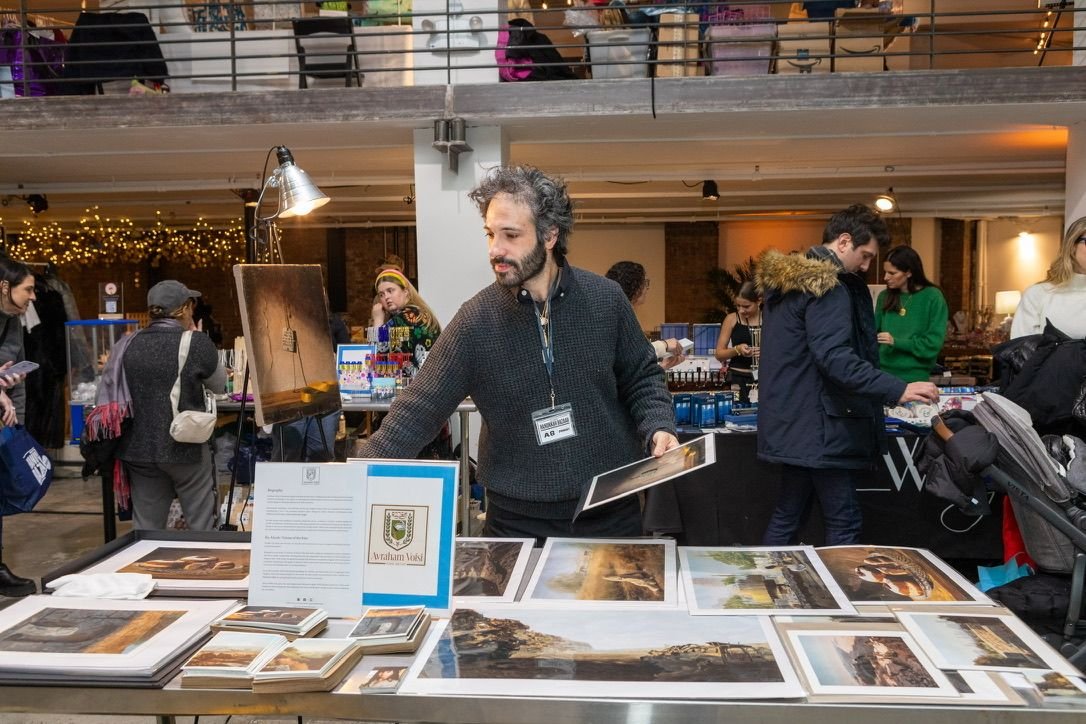Moments of Grace: Painting Through the Chaos
Written by Avraham Vofsi
How the creation of HaAliyah turned from a personal project into an international show.
I moved to Israel six weeks before the war. It wasn’t exactly the smoothest start to my new life. As the country erupted in chaos, I turned to what I knew best—painting. It became a way to process the overwhelming grief, resilience, and disorientation I saw around me. I wanted to capture not just the events themselves but what they meant to the people living through them.
When I began painting this series, I knew I couldn’t shy away from the weight of what was happening. But I also couldn’t create work that added to the horror. I felt an obligation to look for something deeper—to find, as one viewer described it, “moments of grace.” These weren’t “happy” images, but they reflected small truths: a soldier’s quiet exhaustion, the warmth of a family hug, or the haunting silence of Kibbutz Tkuma, where cars from the Nova festival stood as a stark reminder of lives lost. The work became a way to hold onto hope, even amidst unimaginable darkness.
As the series took shape, so did the idea of sharing it. The HaAliyah tour took me from Israel to Australia, the U.S., and finally to Miami. Each stop became a conversation, not just about the paintings but about what it means to be Jewish in these times. In Melbourne and Sydney, I met people navigating their connection to Israel from across the world. In Los Angeles and New York, intimate gatherings reminded me of the power of personal spaces for fostering connection.
And finally, Miami. I can see why every Jew retires there—the weather is incredible, but the warmth of the community was even more striking. Ending the tour at the Jewish Museum of Florida felt like coming full circle. Sharing HaAliyah in such an intimate gathering gave me a chance to connect deeply with each person, hearing their reflections and stories as we processed this journey together. It was the perfect close to a project that had grown far beyond my original vision.
Through these encounters, I realized that HaAliyah wasn’t just about my experience of Aliyah. It was about how we all rise together—whether stepping into the uncertainty of war or confronting the cost of holding onto our identity. Those costs, whether personal, emotional, or collective, became part of the dialogue, as each city added new layers to the exhibition.
This journey taught me that art can do more than document history—it can create bridges. It opens conversations, giving people a way to connect with their grief and hope. By moving to Israel, I found a kind of freedom in my work: to create art that wasn’t reactive, but reflective, focused on telling Jewish stories with complexity and depth.
In the end, HaAliyah wasn’t just mine anymore. It belonged to everyone who saw it, who talked about it, who found their own reflections in the work. And if there’s one thing I’ve learned, it’s that sharing our stories doesn’t just preserve our past—it gives us a way to build a future.










